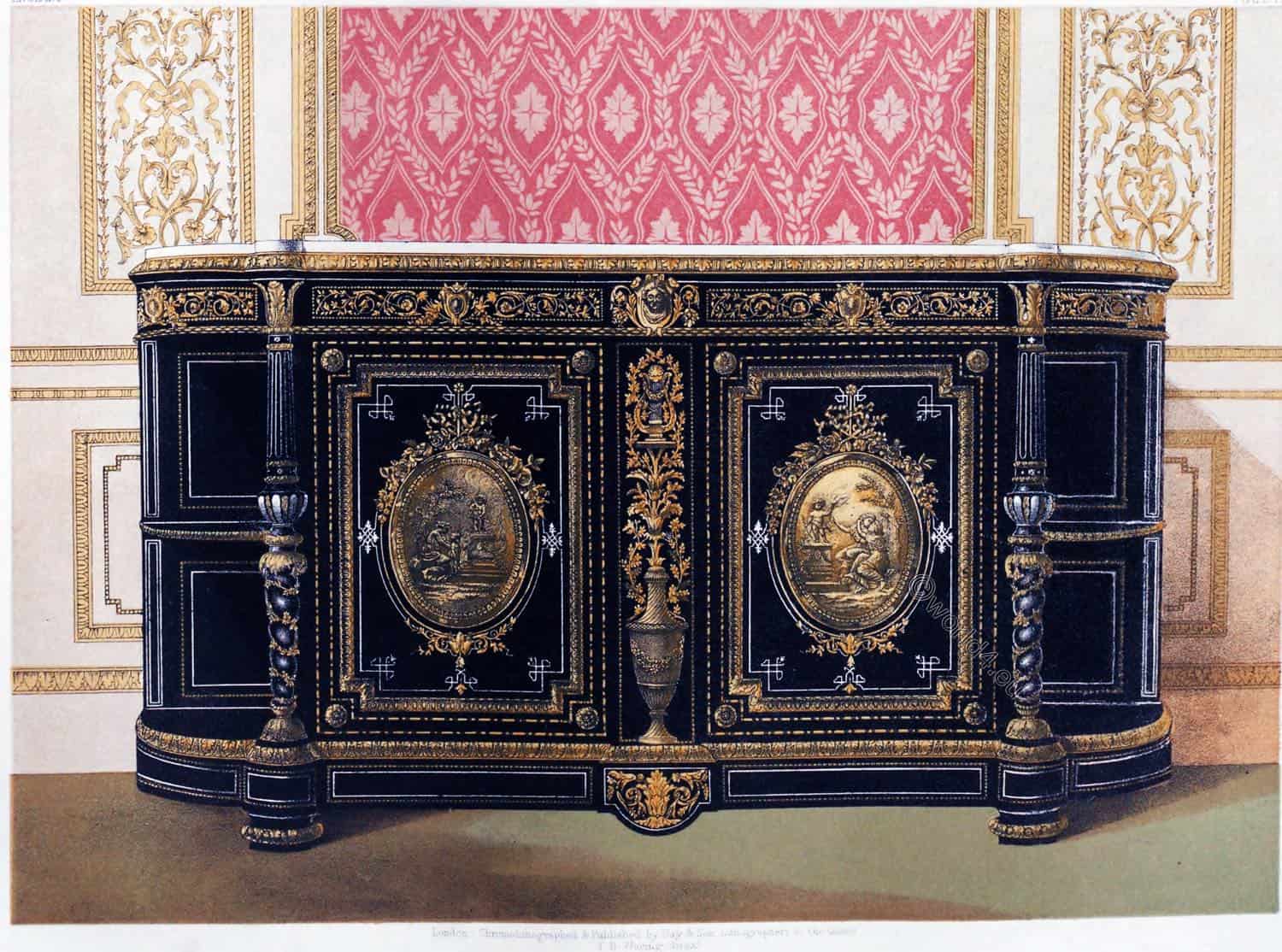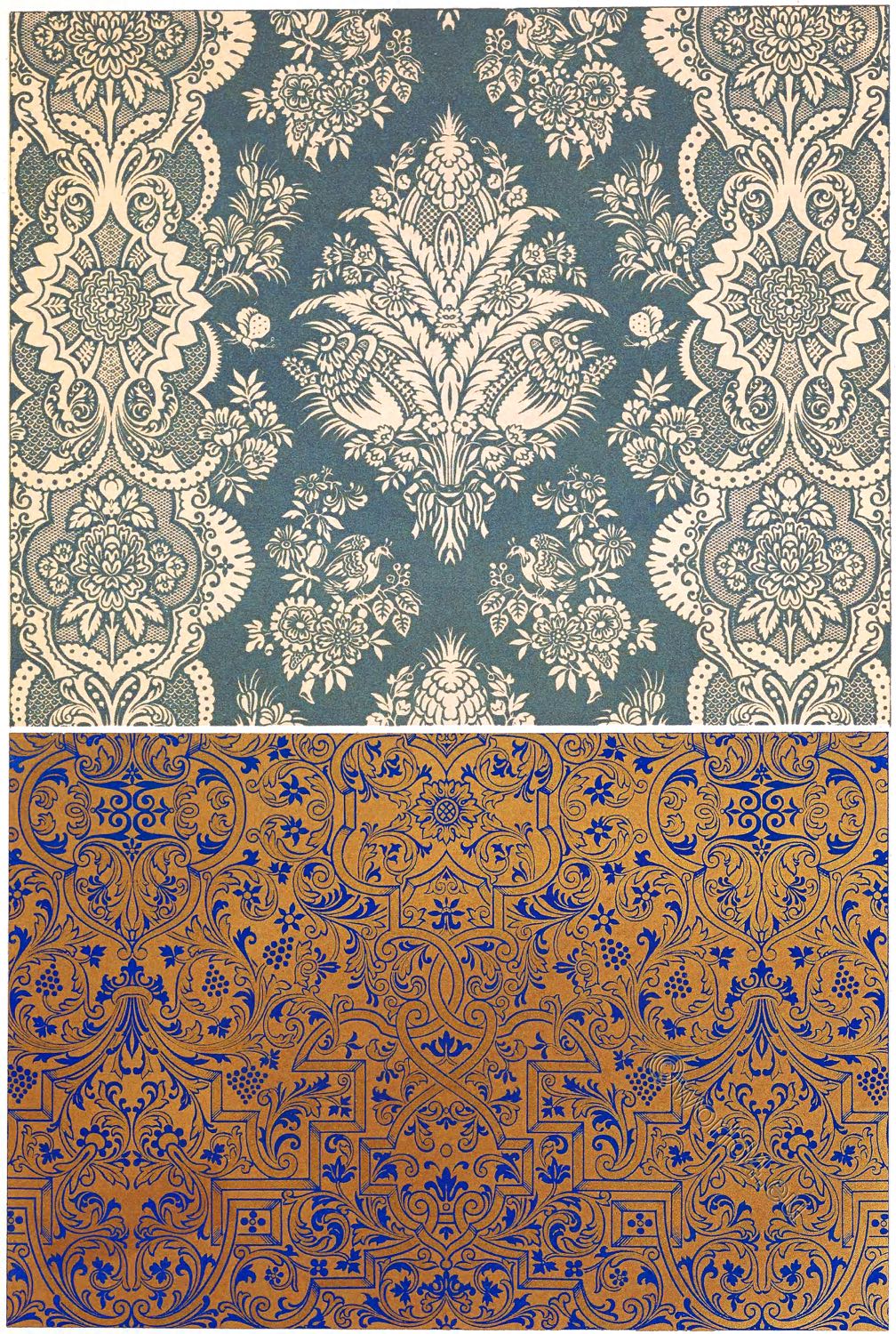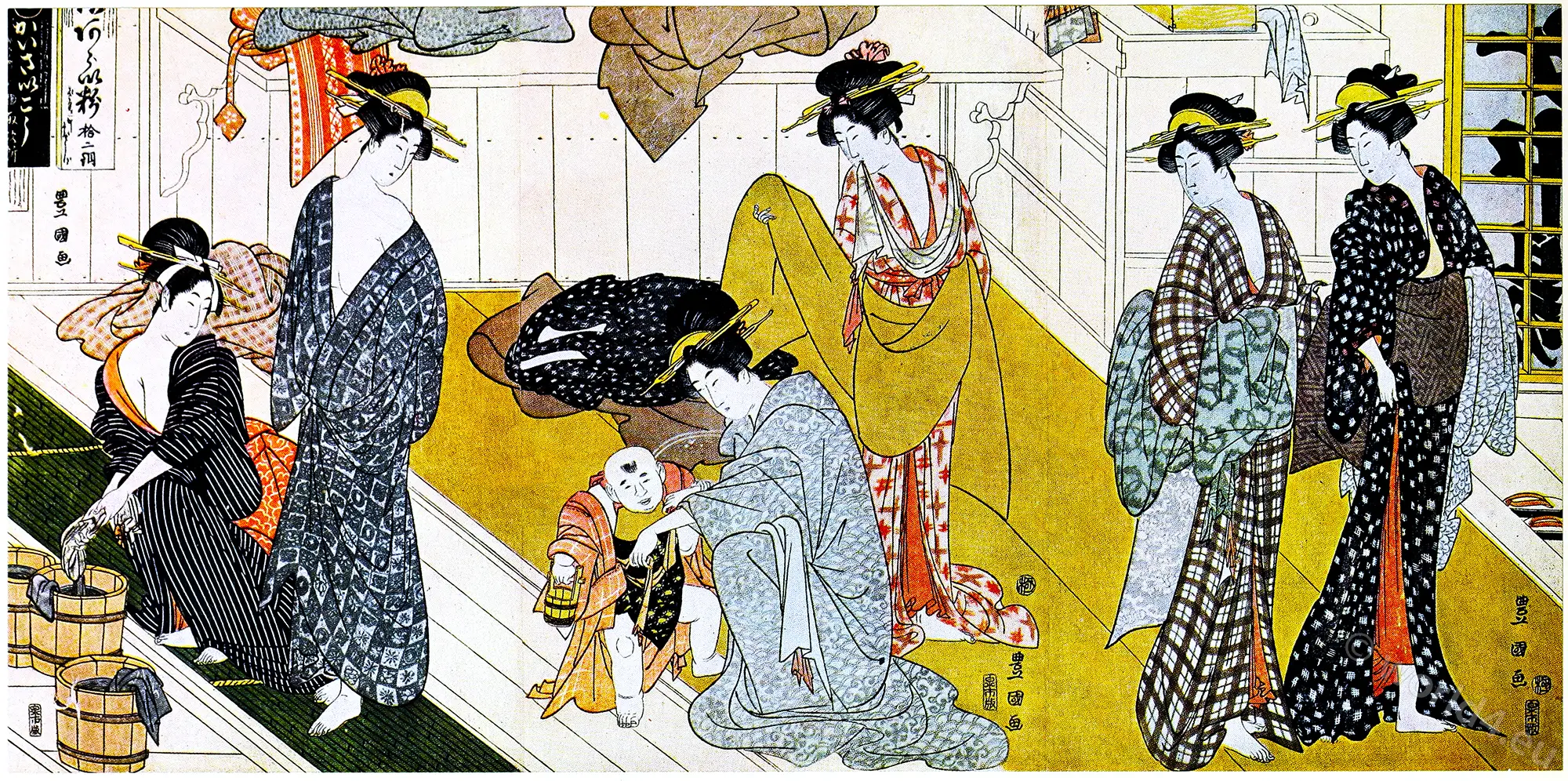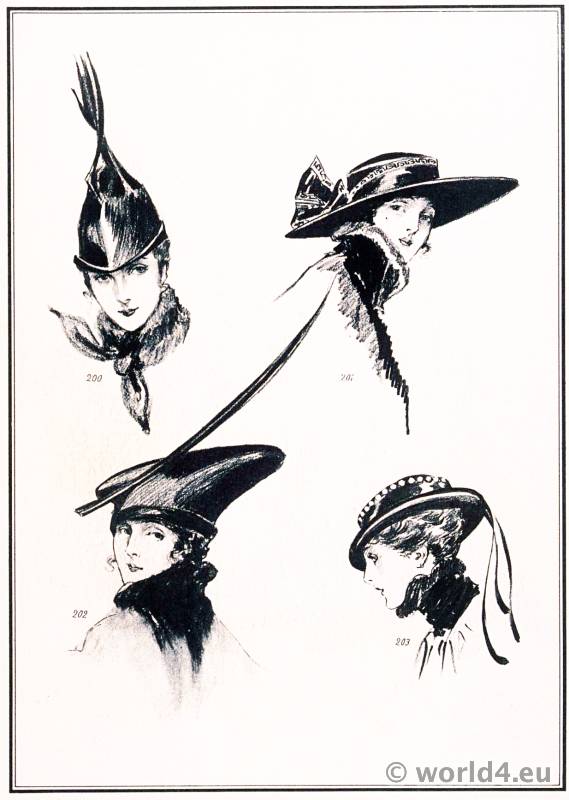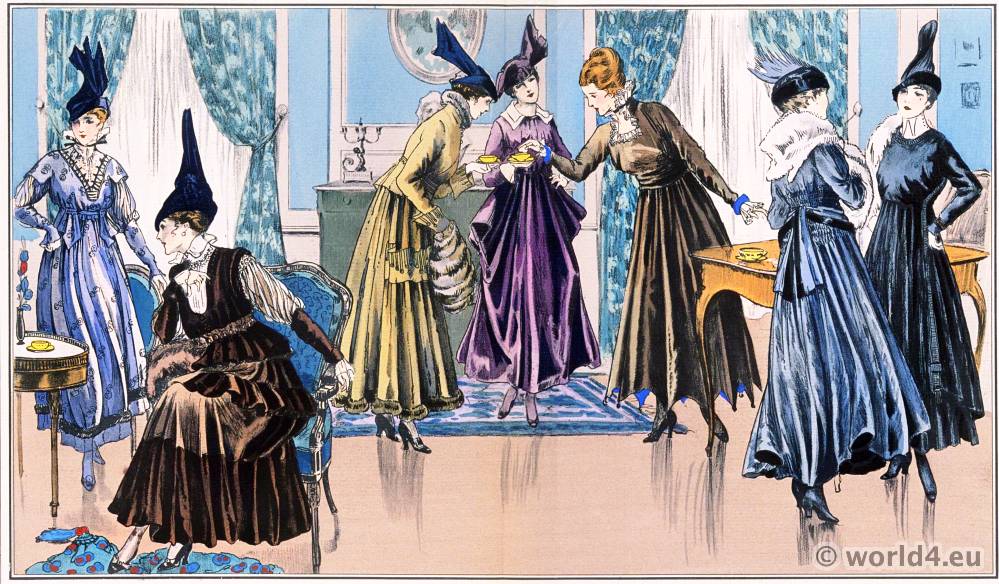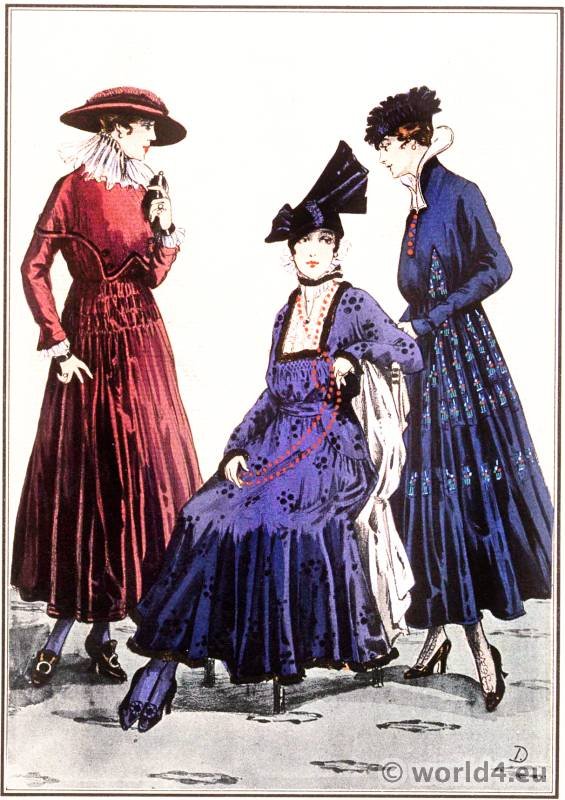CABINET FOR COINS.
Cabinet des médaille.
Inlaid wood with brass gilt ornaments.
BY JOUBERT, CABINET-MAKER, 1755. (Gilles Joubert (1689–1775) ébéniste ordinaire du Garde-Meuble)
National Library, Paris (Medal Room).
This cabinet, with another, its companion, was made to correspond with a large commode-shaped cabinet executed by Gaudreaux from the designs of Slodtz. All three were ordered by Louis XV. to furnish the King’s private apartments at Versailles. The large cabinet was made to hold the series of gold pieces struck in the reign of Louis XIV., and the two corner cabinets, made some years later, were to contain the series commemorating the reign of Louis XV.
The corner cabinets, like the larger one, have a curved front, with a central medallion in low relief of three Cupids on a blue ground; above are garlands of roses with medals hanging from them.
The corner cabinets were the work of Joubert the cabinet-maker, who delivered them on May 16, 1755, as is proved by the accounts of the Royal Garde-Meuble. They are, however, very inferior to the larger cabinet by Gaudreaux, both in design and in the execution of the metal work. Joubert was, however, a fashionable cabinet-maker, and constantly employed by the Court in the middle of the eighteenth century. He executed various works for the Dauphine and the Comtesse de Provence.
See M. GERMAIN BAPST: Chronique des Arts, 1892.
M. ÉMILE MOLINIER: Histoire des Arts Industriels, Vol. III, pp. 127and 140.
Source: Treasures and masterpieces of art. Shown at the 5th World’s Fair in Paris (Exposition universelle de 1900), by Gaston Migeon. Paris: Goupil & cie, 1901.
Discover more from World4 Costume Culture History
Subscribe to get the latest posts sent to your email.


